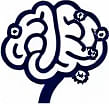Effective Self-Improvement Tactics Through Mental Models
 by Marlene Keeling
by Marlene Keeling
Explore how mental models can transform personal growth by offering practical tools for better decision-making and habit formation. This article covers key strategies for cognitive development, drawing from psychology and business insights to help you build lasting change.

Mental models serve as cognitive frameworks that shape how we interpret experiences and make choices. These tools help individuals refine their approaches to personal growth. For instance, the growth mindset encourages viewing challenges as opportunities for learning rather than fixed barriers.
In practice, adopting a growth mindset involves recognizing that abilities can develop over time. This contrasts with static views and fosters resilience in the face of setbacks. By integrating such models, people can enhance their daily routines.
One useful model is the feedback loop, which emphasizes continuous adjustment based on results. A feedback loop creates a cycle where actions lead to outcomes, and those outcomes inform future steps. This approach is particularly valuable in professional settings, where it aids in refining skills and strategies.
Consider how feedback loops apply to habit building. When starting a new routine, such as exercise, tracking progress allows for real-time modifications. This method ensures that efforts align with goals, making self-improvement more effective.
Another key concept is opportunity cost, which involves weighing the benefits of one choice against others. Opportunity cost reminds us that every decision has trade-offs. In business, this model helps prioritize tasks that yield the highest returns.
For personal development, applying opportunity cost means evaluating how time spent on activities contributes to long-term objectives. For example, choosing to read instead of scrolling through social media can lead to greater knowledge gains.
Systems thinking offers a broader perspective by examining how elements interconnect. This model views problems as parts of larger systems rather than isolated events. In cognitive development, systems thinking promotes holistic problem-solving.
By using systems thinking, individuals can identify patterns in their behavior and environment. This awareness helps in creating sustainable changes, such as improving work-life balance through better resource allocation.
In psychology, the concept of confirmation bias highlights how people favor information that supports their beliefs. Addressing confirmation bias involves actively seeking diverse viewpoints to challenge assumptions. This tactic strengthens decision-making processes.
Over time, overcoming confirmation bias leads to more balanced perspectives and reduces errors in judgment. Professionals often use this awareness to foster innovation in teams.
Pareto principle, or the 80/20 rule, suggests that a small percentage of efforts often produce most results. This principle guides focus toward high-impact activities. In self-improvement, it means identifying the key actions that drive progress.
Applying the Pareto principle can streamline daily tasks, allowing for more efficient use of energy. For instance, focusing on the top 20% of study materials might yield 80% of learning outcomes.
Building on these ideas, marginal gains involve making small, incremental improvements. This strategy accumulates advantages over time, leading to significant overall progress. Marginal gains work well in fitness routines, where consistent minor adjustments build endurance.
In business strategies, marginal gains help optimize processes without major overhauls. The key is consistency and measurement to track advancements.
To implement these mental models effectively, start with self-reflection. Regular journaling provides insights into thought patterns and behaviors. This practice supports ongoing cognitive development by revealing areas for adjustment.
Steps for Integration
- Begin by selecting one model to focus on, such as the growth mindset.
- Apply it to a specific goal, like learning a new skill.
- Monitor progress through simple tracking methods.
- Adjust based on observations to refine your approach.
These steps make abstract concepts actionable. For lifelong learners, combining models creates a personalized toolkit for growth.
In cognitive development, mental models also aid emotional regulation. For example, reframing negative experiences through a different lens can reduce stress. This technique draws from psychological principles to promote mental well-being.
Business professionals benefit by using models to enhance leadership. Understanding team dynamics through systems thinking improves collaboration and outcomes.
Ultimately, the value of these tactics lies in their adaptability. Whether in personal or professional contexts, they offer practical ways to foster change. By incorporating mental models into routines, individuals can achieve more meaningful progress.
As you explore these strategies, remember that consistency is essential. Over time, the compounded effects lead to substantial improvements in various areas of life.
